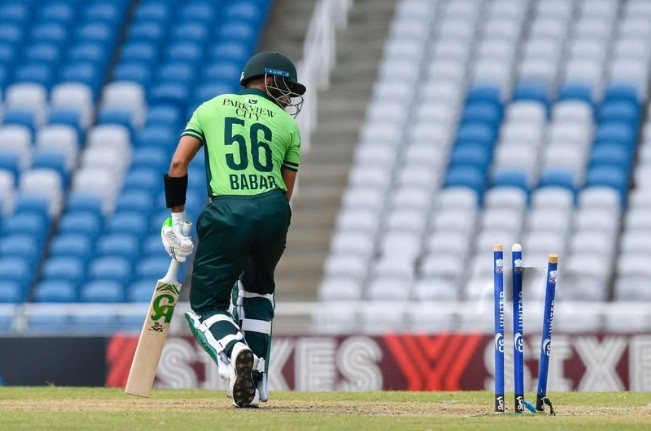From Poetic Cover Drives to Prolonged Silence
Pakistan’s Batting King Struggles to Find His Rhythm Again
Just two years ago, Babar Azam was hailed as the undisputed king of Pakistan cricket, a run machine who seemed immune to dips in form. His cover drives were poetry, his temperament unshakeable, and his numbers stacked up alongside the greatest of the modern era.
But cricket has a way of humbling even its brightest stars. Since his majestic 151 against Nepal at the Multan Cricket Stadium during the Asia Cup 2023, Babar has failed to score another century in any international format. The drought has now stretched to 712 days, an astonishing dry spell for a batter of his calibre.
ODI Form: From Dominance to Decline
Between 2019 and 2022, Babar averaged well above 50 in ODIs, often shouldering the bulk of Pakistan’s runs. However, since his last ton in August 2023, his ODI numbers have dipped:
- 28 innings played
- 929 runs at an average of 37.16
- Strike rate: 79.53
- Highest score: 78
- Nine fifties, none converted into a century
For a player whose hallmark was big scores and match-winning knocks, the inability to convert starts into hundreds is the most glaring statistic.
Test Cricket Struggles
In Test matches over the past two years, Babar’s form has been equally concerning:
- Average: 23.15 in recent series
- Zero centuries
- Several low scores, including ducks in crucial fixtures
His technique, once considered watertight, has shown vulnerability against both pace and spin particularly early in his innings.
T20I Output
In the shortest format, Babar has managed 738 runs at a strike rate of 133.21 in this period, but again, no centuries. His role as an anchor is under scrutiny, with critics arguing that in modern T20 cricket, strike rotation alone isn’t enough the ability to accelerate consistently is equally vital.
Why Pakistan Still Needs Him
Despite the slump, Babar remains Pakistan’s most technically sound batter. His experience in chases, composure under pressure, and ability to anchor innings are qualities that cannot be replaced overnight. Young batters like Saim Ayub and Abdullah Shafique are promising, but none yet match Babar’s consistency from his peak years.
If Pakistan hopes to challenge top-ranked teams in upcoming ICC tournaments, a firing Babar Azam could be the difference between early exits and title contention.
Possible Reasons Behind the Form Collapse
1. The Weight of Comparisons
From the moment he broke into the international scene, Babar has been compared to India’s Virat Kohli. While flattering at first, the constant parallel has become a heavy burden.
Former Pakistan opener Ahmed Shehzad recently remarked:

“Comparisons with Kohli may have fueled unrealistic expectations. Babar is a world-class player, but the mental pressure of being constantly measured against one of the greatest can take a toll.”
2. Leadership Disruptions
Babar’s tenure as captain was marked by high-pressure tournaments, internal politics, and constant scrutiny. He resigned from the white-ball captaincy in 2024, citing the need to focus on batting. But frequent shifts in leadership roles taking on the armband, relinquishing it, and then returning in certain formats may have disrupted his rhythm and focus.
3. Technical Adjustments Gone Wrong
Analysts have noted slight changes in Babar’s stance and trigger movement over the past year, possibly in an attempt to counter bowlers targeting his off-stump channel. Instead of solving the problem, these tweaks may have unsettled his natural balance and timing.
4. Mental Fatigue
The relentless modern cricket calendar leaves little room for mental reset. Add in social media criticism often merciless and the pressure intensifies. A viral fan comment during the recent West Indies series, “No Zimbabwe, no party,” mocking his past success against weaker teams, captured the frustration of a fan base hungry for big-match performances.

